The Mining Report: Last month, the price of gold rose over 3% in one day. Can we ascribe this to the conflicts in Ukraine and Iraq or the unraveling of Chinese commodity financing deals?
Rick Mills: I don’t think those things had anything to do with it. The unraveling of Chinese commodity financing deals was mostly about copper. While the situation in the Middle East is certainly affecting the price of oil, I believe that Federal Reserve Chair Janet Yellen has more to do with the price of gold than anything else going on in the world today.
TMR: You’re referring to her press conference of June 18?
RM: Yes. She confirmed that the tapering of bond buying will continue, but more important was her announcement that the Fed’s zero interest rate policy will continue. Real interest rates are going to remain low for a while yet; that news caused gold’s price to increase. Below is a chart created by U.S. Investors. It shows in stark clarity the relationship between real interest rates and gold’s price.
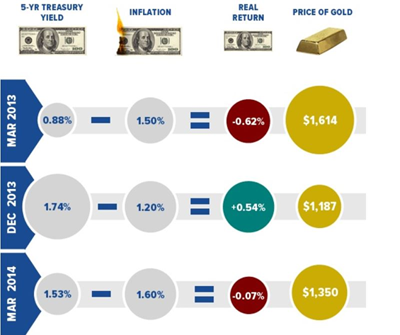
TMR: Many goldbugs believe gold and silver prices are manipulated downward by central banks. Do you agree?
RM: No, I don’t. I almost wish it were true. If it were, I could sit back and play the markets knowing exactly what was going to happen next. This claim of manipulation is just an excuse for being constantly wrong. It’s a business model to sell gold off your website and expensive newsletter subscriptions. Learning about sector rotation and macro events will make you a much better investor than clinging to conspiracy theories.
TMR: Do you have any thoughts on where the prices of gold and silver will go in the second half of 2014?
RM: Higher sooner rather than later. That goes for copper, nickel, tin, zinc and pretty much any mineral. It’s a question of supply and demand. Junior resource companies own the world’s future deposits. They buy claims from prospectors, work the projects and advance them to where they are bought by larger companies. And these mining juniors cannot get funding. So how will the majors replace their reserves? The answer is that they can’t. It’s just a matter of time before metals prices react to physical shortages. Think about it, when was the last time you heard of a major mining company making a discovery?
TMR: You’ve written at length about rising global scarcity of resources. What effects will this have on metals prices?
RM: We live on a planet with a finite resource base with a growing population. We reached 7 billion people in October 2011. The United Nations says we can probably expect upward of 10 billion people by 2050. Other reports claim that world population will reach 11.4 billion by the 2060s. Norman Borlaug, the father of the green revolution, said if we do everything that he has shown us, and there are no black swans, the earth could support 10 billion people at most.
Ecological overshoot is coming. Our freshwater aquifers, probably our most important treasure, are being sucked dry by industry and unsustainable drybelt agriculture, and poisoned at the same time through fracking. We’re rushing headlong into shortages of resources and the resulting conflicts over them. The low-hanging mineral fruit has been picked. Metallurgy is becoming more complicated, energy is becoming more expensive, and labor shortages loom. The baby boomers are starting to retire en masse, and the resource-orientated talent pool is thinning out.
At the same time, massive urbanization is ongoing in Asia and Africa. As people there move into the cities, they climb the protein ladder and eat more dairy products and chicken and beef. They get cell phones and maybe a washer and dryer, air conditioning and a motorcycle. All this puts an enormous strain on supply. Metals are going to get much scarcer, and prices are going to get very dear.
TMR: You’ve also written about the return of economic imperialism. Do you foresee superpowers invading countries to secure resources, or will they apply pressure indirectly?
RM: I like Lenin’s take on the morphing of early 19th-century imperialism that he called monopoly capitalism—an alliance between big business and banking capital that dominates the state to gain exclusive control of raw materials and control of foreign markets. And both direct and indirect pressure are being applied. Russia has applied force directly in the Crimea and is applying it directly and indirectly in Ukraine. Look at what China is doing to the other stakeholders in the China Seas and what the U.S. did in Libya for control of both water and oil. Countries need to access secure sources of minerals, energy and just basic materials. If they don’t, we can expect more Arab Springs, even in developed countries.
TMR: When we last spoke, you noted the significantly higher cost of new nickel and copper projects. Where do we stand a year later?
RM: Things have gotten worse. We have not seen the demand destruction that would facilitate a drop in prices, and we’re not going to.
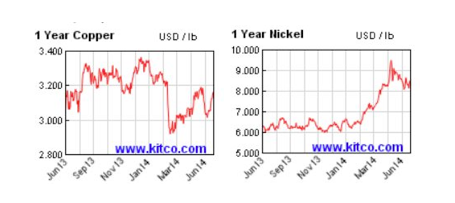
Even after the unraveling of Chinese commodity financing deals, copper is still over $3 a pound. If you’re searching for new copper deposits, you must go farther and farther afield into dangerous country.
Nickel is the same. Indonesia, one of the biggest suppliers, has decided to stop exporting raw ore. Nickel comes increasingly from laterites, and the metallurgy just doesn’t seem to work on them. As a result, cost overruns are ballooning out of control.
TMR: Which nickel projects are your favorites?
RM: As far as I’m concerned there’s only one, North American Nickel Inc.’s (NAN:TSX.V) Maniitsoq project in Greenland. This is not a laterite project; it’s nickel sulfide. And it’s close to year-round shipping from deep-sea fjords.
North American Nickel closed a $9.4 million ($9.4M) financing in May and announced a $9M+ greenfields exploration program June 19. The company is doing geophysics, sampling and drilling. We’ll have news flow coming soon, and that will continue into early winter.
TMR: When will we know whether Maniitsoq is economic?
RM: I think we’ll know by the time we get the drill results this year. In the meantime, here’s something to think about. North American Nickel, owns the entire Greenland Norite Belt, all 70-odd kilometers of it. This is a potential new Sudbury, and North American Nickel owns 100% of it. This is the play. Nobody else is spending up to $10M this year.
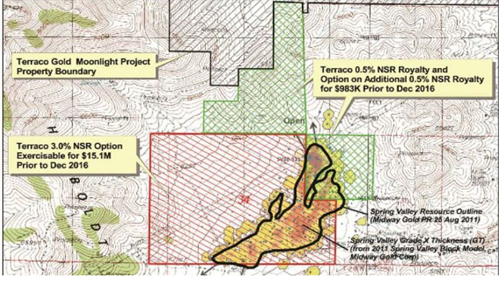
TMR: What is the relationship between North American Nickel and VMS Ventures Inc. (VMS:TSX.V)?
RM: They’re two separate companies, but there is a lot of synergy. Mark Fedikow is the CEO of North American Nickel and also VP Exploration at VMS. John Roozendaal runs VMS now and is on the board of North American Nickel. VMS owns 22% of North American Nickel. The Sentient Group, a $2+ billion resource fund, owns close to 50%. I don’t think that VMS really affects North American Nickel; it’s the other way around. VMS stands on its own. I don’t know too many companies out there right now that have 30% of a high-grade copper mine—a commercially operating copper mine by the way—and 22% of Maniitsoq, what could be the greatest Canadian exploration story since Voisey’s Bay.
TMR: Do you worry that environmentalists could attempt to fence off Greenland as “the world’s last great unspoiled wilderness?”
RM: You should talk to the people of Greenland and ask them what they want. That sort of talk more amuses me than anything else. It’s easy to preach about freezing somebody else’s economic development when you already enjoy a high standard of living. I think most Greenlanders understand that when you have natural resources, you need to exploit them responsibly for the betterment of all.
Greenland has one of the world’s best reporting and permitting systems. Work is going ahead.
TMR: You mentioned that VMS owns 30% of the Reed copper project in Manitoba. Tell us more about that.
RM: HudBay Minerals Inc. (HBM:TSX; HBM:NYSE), which owns 70%, has formally declared commercial production at Reed. Right now, 100% of the cash flow that VMS would normally get is going back to pay the no-interest loan that HudBay made to carry it to production.
VMS has something like $5M in the treasury now. It is looking for an acquisition, a close-to-mining scenario. VMS is going to be doing some exploration work on its 100%-owned properties, but VMS needs to conserve cash until the Reed money starts flowing in. I know John Roozendaal. He’s a miner and as solid as they come.
TMR: When will VMS start getting its share of the cash flow from Reed, and how much will that be?
RM: Initial estimates will be a year and very substantial monies flowing to VMS. Let’s get a couple quarters of production under our belt and talk then.
TMR: Richard Mark resigned as CEO and chairman of VMS June 16. Is this significant?
RM: I don’t think so.
TMR: Which gold juniors do you like?
RM: I like two. I’ll start with Cangold Ltd. (CLD:TSX.V). Bob Archer is CEO of Great Panther Silver Ltd. (GPR:TSX; GPL:NYSE.MKT) and Cangold. Cangold just closed a $750,000 financing. It was oversubscribed by $100,000, so now the company has $850,000+ in its treasury. That’s enough for the summer and fall program at Guadalupe de los Reyes in Mexico.
TMR: What are Cangold’s plans there?
RM: The company is going to get geos out to the site and structurally map the high-grade system. Cangold is going to re-log the drill core, send it out for assays, do a bunch of sampling and remodel the whole thing. There are 428 holes in the property; 48 are core holes. The rest would be reverse circulation.
Guadalupe is a quartz-vein system with visible gold. It was mined as far back as the 1770s. Cangold has an option to acquire 100% of it from Vista Gold Corp. (VGZ:NYSE.MKT; VGZ:TSX). Vista has put a half-million ounces through a scoping study, and Cangold will pay $5M in staged payments over the next three years to acquire 70%, with $3M to buy the last 30%.
TMR: How valuable is Bob Archer’s track record to Cangold?
RM: I got into Great Panther at $0.38/share a decade ago and watched it rise to 10 times that. Bob and his team have 10 years of operational experience in Mexico. They took on Guadalupe because of the 500,000 ounces (500 Koz) of gold there, plus 10 million ounces (10 Moz) of silver. It’s open pit now, but because of their experience at Guanajuato and Topia they think they can do a combination of open pit and underground.
Tetra Tech completed a preliminary economic assessment in March 2013 that contemplated a 35 Koz gold producer from open pit only. I think Cangold can bump that up to maybe as high as 50 Koz gold equivalent annually. That would be equal to Great Panther’s production level. Cangold has a tight share structure, and I think it’s got a hell of an upside when gold starts to rise.
TMR: What’s the second gold junior you like?
RM: Terraco Gold Corp. (TEN:TSX.V).
TMR: Could you explain this company’s relationship with Barrick Gold Corp. (ABX:TSX; ABX:NYSE),Midway Gold Corp. (MDW:TSX.V; MDW:NYSE.MKT) and the Spring Valley gold project in Nevada?
RM: This is a project that has just gotten a lot more interesting. Spring Valley is a joint venture between Barrick and Midway. Barrick’s the operator with 70% interest and Midway has 30%. Barrick is fast-tracking this and being extremely aggressive in advancing it to prefeasibility. It is going to spend $8.3M in 2014 for project development and $5M for further exploration. This is a resource of 2.16 Moz gold Measured and Indicated and 1.97 Moz Inferred for a total of 4.13 Moz gold. Terraco has bought a net smelter return (NSR) of up to 3% on claims covering the vast majority of the currently outlined Spring Valley deposit.
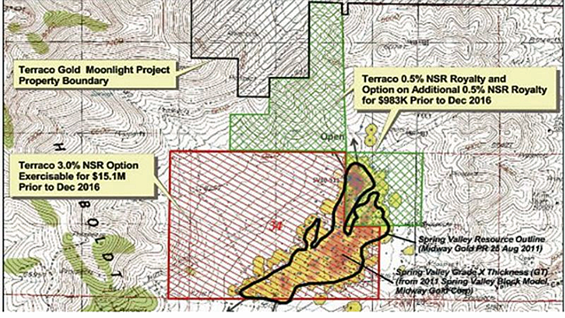
TMR: Does Barrick’s spending of that much money suggest confidence that the deposit can be expanded?
RM: Yes, it does, which makes Terraco’s NSR worth even more. But that’s not all. Terraco owns a project called Moonlight, which is located at the north end of the Spring Valley project. North of Moonlight isRenaissance Gold Inc.’s (REN:TSX) Fourth of July project. Renaissance just signed an exploration agreement with Sumitomo Corp.’s (8053:TKY; SSUMF:OTCPK) U.S. subsidiary Summit Mining Exploration to earn up to 70%. If you picture it on a line, on strike, you’ve got the Rochester mine, Spring Valley, Terraco’s Moonlight and Fourth of July. So what we have is Terraco’s Moonlight property sandwiched right in between Barrick and Sumitomo. Plus Terraco has the royalty on Barrick, and 864 Koz gold at its Almaden project in Idaho. You can see why I’m pretty excited about Terraco.
TMR: Turning to silver, do you still like Great Panther?
RM: Yes, I do. The company is producing from two mines in Mexico: Guanajuato and Topia. This gives it upside to a rising silver price, as well as lead and zinc. Great Panther has an advanced project, another production story, at San Ignacio and exploration projects at El Horcon and Santa Rosa. You’ve got pretty much the whole works with Great Panther.
TMR: How are its production costs looking?
RM: Going to get better. There is additional ore coming from San Ignacio; the company forecasts about 250 tonnes a day by the end of 2014. This increases throughput at Guanajuato with no further capital expenditures. The updated San Ignacio resource estimate was 121 grams per ton (121 g/t) silver and 2.28 g/t gold. Great Panther’s leverage to a rising silver price is hard to beat.
TMR: What effect has the new royalty/tax regime had on miners in Mexico?
RM: The cost of doing business, mining, in Mexico has risen; there’s no doubt about that. So much will depend on what happens to the price of silver.
TMR: Is there a silver explorer you’re keen on?
RM: Kootenay Silver Inc. (KTN:TSX.V). It has 76 million shares fully diluted. Its Promontorio project in Mexico has a Measured and Indicated silver-equivalent resource of 92.4 Moz; there’s a very large gold component to the resource. Its Inferred resource is 26.8 Moz for a silver-equivalent total of 119.2 Moz. Considering its share structure, you’re actually buying 1.5 silver-equivalent ounces for $0.30. That’s about as good as it gets when you’re talking about leverage to a rising silver and gold price.
Promontorio is currently one open pit, with Kootenay still drilling and trying to increase the size of the deposit. On the same piece of property Kootenay has a very exciting early-stage silver exploration project called La Negra. It’s an open-pittable heap leach. It’s a breccia, which is a diatreme pipe, and it forms a very prominent hill with some 120 to 130 meters of relief. The bedrock has been exposed and mapped. Kootenay flew geophysics over, and results suggest that it is at least twice the size of what is actually exposed. The results are pretty damn impressive—it’s got some size and it’s right on surface.
TMR: What’s Kootenay’s path to production at Promontorio?
RM: Kootenay is doing a $2.5M financing for more development work and drilling. Kootenay is at its low. You’d buy because you believe silver and gold are going to turn around. This is contrarian investing. You’re supposed to buy low and sell high, right?
TMR: Which so-called critical or strategic metal is most interesting to you?
RM: Right now, cobalt. I think a lot of attention is being focused on this metal, and rightly so, with Tesla’s “Gigafactory” talk. There’s no cobalt production in the U.S., and I personally don’t believe there will be any. Investors will have to start looking farther afield. In Russia, for instance.
TMR: What’s the cobalt company you like there?
RM: Global Cobalt Corp. (GCO:TSX.V), which will complete the resource report for its Karakul cobalt project. It is going to come up with an NI-43-101-complaint resource estimate that the Western media is going to accept. That’s pretty exciting. I think we’re going to see an upward revision in its share price now.
TMR: It’s quite rare to hear about a Canadian mining company operating in Russia.
RM: It’s special, all right. It’s actually in the Altai Republic, which is about as far from Moscow as your big toe is from your heart. Global Cobalt has the full cooperation of the Republic’s government. The World Bank is in there. It has Chinese backing, and the Japanese are there, too: Panasonic. China is signing the offtake agreements for this. There are not a lot of companies in China or Russia I would invest in, but this is certainly one of them.
TMR: Junior miners saw a big surge in share prices last winter. Then there was a big fall off. Might we see another surge this year?
RM: We’re not going to stop using metal; we’re not going to suddenly stop valuing gold and silver as precious. Majors do not find the worlds mines, juniors do. Juniors’ share prices have to go up; the sector has to revive for majors to replace mined reserves.
TMR: Rick, thank you for your time and your insights.
Rick Mills is the owner and host of www.Aheadoftheherd.com and invests in the junior resource sector. His articles have been published on over 400 websites.
DISCLOSURE:
1) Kevin Michael Grace conducted this interview for Streetwise Reports LLC, publisher of The Gold Report, The Energy Report, The Life Sciences Report and The Mining Report, and provides services to Streetwise Reports as an independent contractor. He owns, or his family owns, shares of the following companies mentioned in this interview: None.
2) The following companies mentioned in the interview are sponsors of Streetwise Reports: North American Nickel Inc., Great Panther Silver Ltd. and Terraco Gold Corp. Streetwise Reports does not accept stock in exchange for its services.
3) Rick Mills: I own, or my family owns, shares of the following companies mentioned in this interview: North American Nickel Inc. I personally am, or my family is, paid by the following companies mentioned in this interview: Global Cobalt Corp., Great Panther Silver Inc., Kootenay Silver Inc., Cangold Ltd., North American Nickel Inc., VMS Ventures Inc. and Terraco Gold Corp. My company has a financial relationship with the following companies mentioned in this interview: None. I was not paid by Streetwise Reports for participating in this interview. Comments and opinions expressed are my own comments and opinions. I had the opportunity to review the interview for accuracy as of the date of the interview and am responsible for the content of the interview.
4) Interviews are edited for clarity. Streetwise Reports does not make editorial comments or change experts’ statements without their consent.
5) The interview does not constitute investment advice. Each reader is encouraged to consult with his or her individual financial professional and any action a reader takes as a result of information presented here is his or her own responsibility. By opening this page, each reader accepts and agrees to Streetwise Reports’ terms of use and full legal disclaimer.
6) From time to time, Streetwise Reports LLC and its directors, officers, employees or members of their families, as well as persons interviewed for articles and interviews on the site, may have a long or short position in securities mentioned. Directors, officers, employees or members of their families are prohibited from making purchases and/or sales of those securities in the open market or otherwise during the up-to-four-week interval from the time of the interview until after it publishes.
Chalkboard image by Orin Zebest

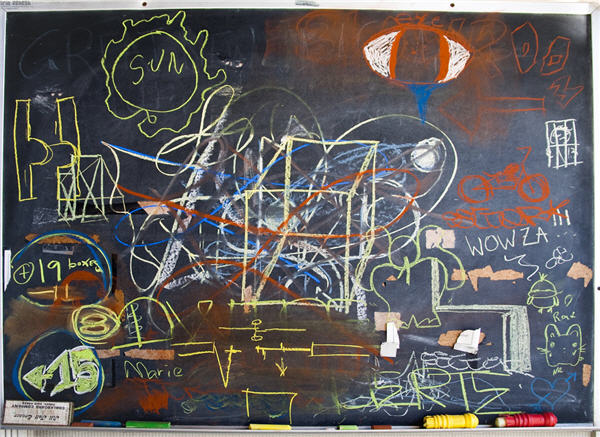
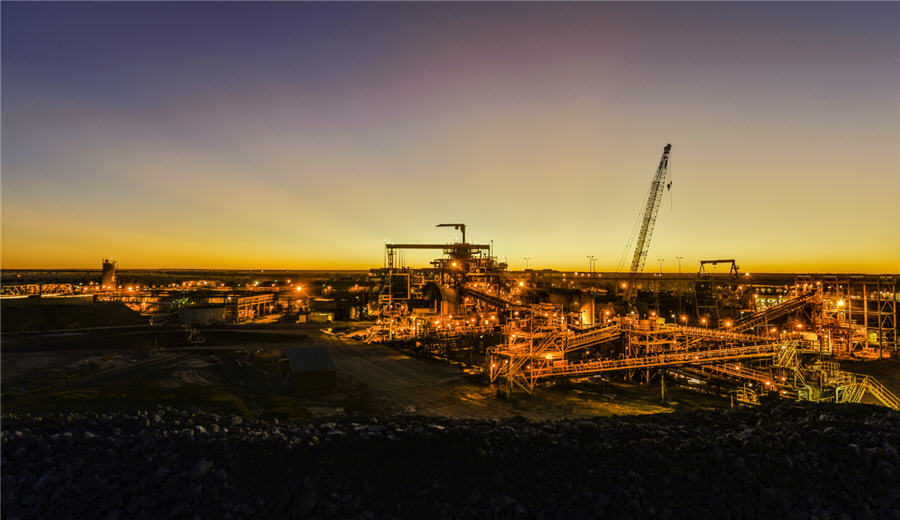
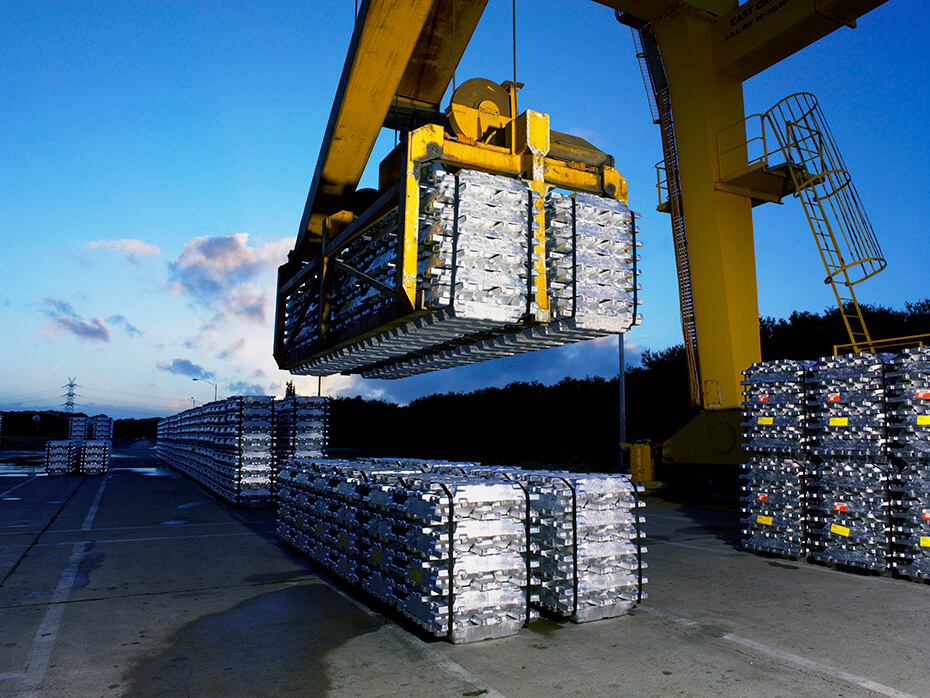

Comments